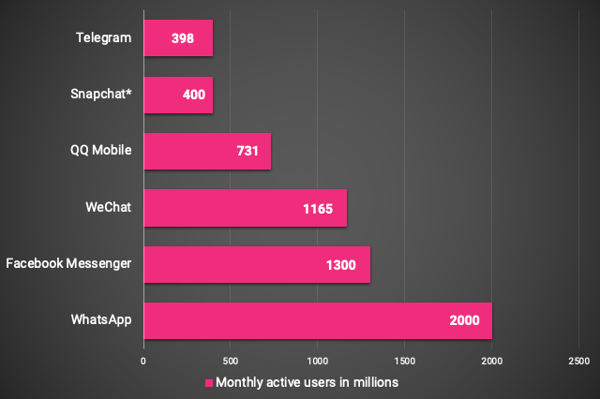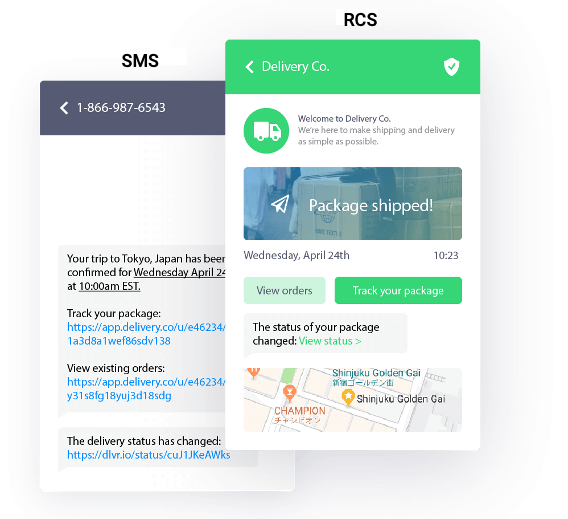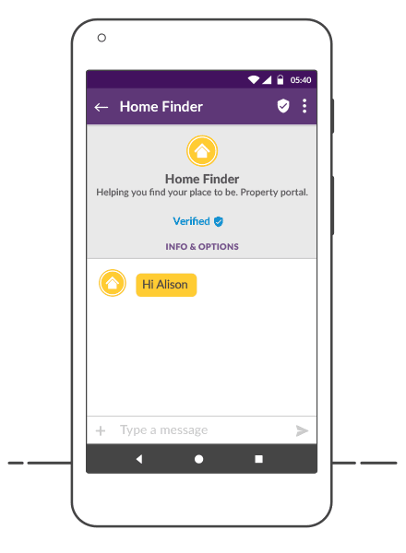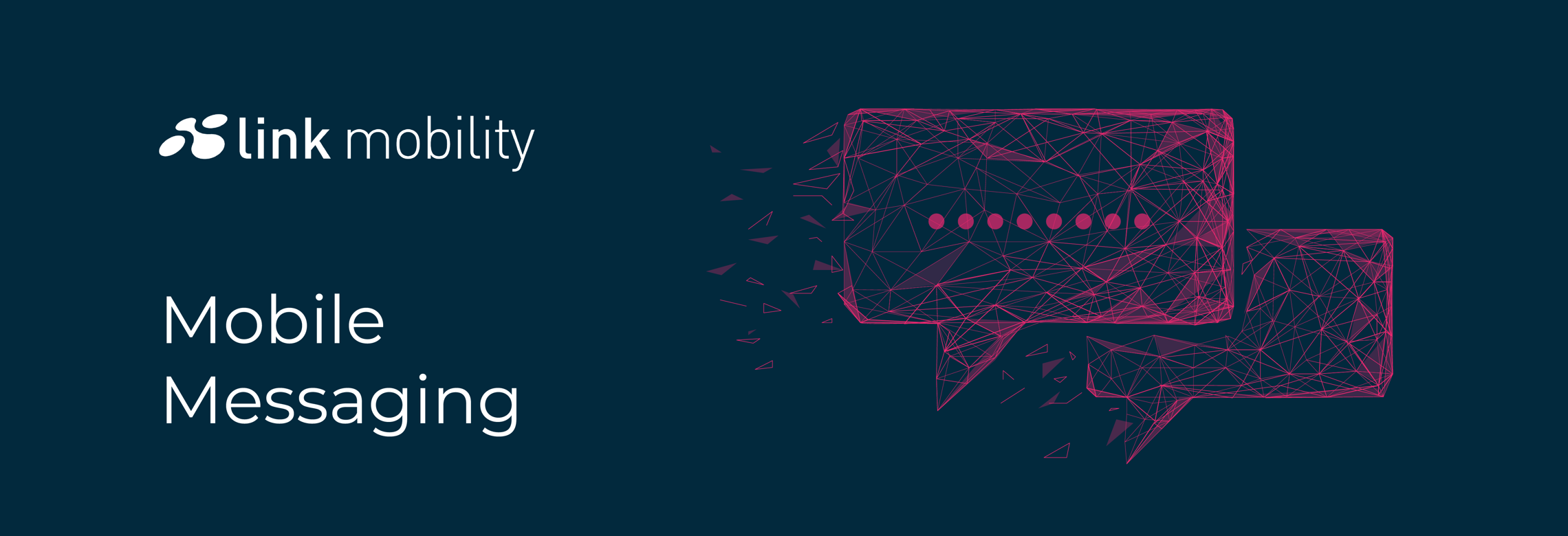In 1992, the first SMS ticked in reading, “Merry Christmas!” From this single text message to over 260 billion messages sent worldwide every day, SMS has had quite a drastic impact on both companies and their consumers. Mobile messaging has evolved significantly since that first message, now offering rich content as well as conversational options. As a result, mobile messaging has become a valuable part of marketing and, subsequently, marketing automation platforms. Let’s take a closer look at mobile message marketing and some of the opportunities and challenges it presents in 2020.
SMS In Action
Some might think SMS is dying in the crowd of other mobile marketing communication channels, but statistics tell us otherwise. The number of SMS users increases each year and is predicted to reach 5.9 billion by 2025. More importantly, 85% of consumers prefer SMS to emails and phone calls. The incredibly high open rates also accurately demonstrate the effectiveness of SMS communications. The average consumer opens an SMS within 90 seconds of receiving one, leading to an open rate of 98% compared to email, which only reaches 20%. Despite the positive statistics, 61% of companies are still not using SMS marketing, meaning most brands are not fully grasping the incredible value and opportunities the channel can supply to their strategies. The good news? If your company properly utilizes SMS marketing, you are already likely ahead of your competitors.
Global travel agency, Apollo, for example, brilliantly executes mobile message marketing by using SMS to inform customers of activities as they travel. While on vacation, customers are sent relevant offers for trips or activities, which they have the option of responding “yes” or “no” to directly. If they choose to participate in an activity, they can easily pay straight from their phone. With marketing automation, these travelers are also able to receive further offers based on the activities they either turn down or accept. These SMS campaigns are especially effective because they utilize the most direct form of mobile communication, prioritizing convenience for consumers.
Over-The-Top Channels and Rich Content Services
Although SMS has proven to be quite effective, a plethora of new communication channels have been brought to the forefront in recent years, many of which include over-the-top (OTT) channels. In 2019, it was estimated that more than 2.1 billion people use OTT channels such as WhatsApp, Messenger, Facebook, and Instagram every day. Of these channels, WhatsApp is the leading messaging app in the world with over 2 billion active users. Of all smartphone users in India, 96% opt for WhatsApp as their first choice when thinking about messenger communication applications.
Most Popular Global Mobile Messenger Apps

OTT channels can be used with plain text, but there are also channels that support rich content, known as Rich Content Services (RCS). The ability to offer rich content—sometimes written by chatbot and AI—is often high on the list of requirements for any sophisticated communications. Channels must be rigged to provide relevant content in a rich conversation. The significant utilization of OTT channels and RCS by consumers indicates that the way companies communicate with customers is changing once again, ultimately presenting a challenge for brands and providers to accurately gauge each customer’s preferred platform.

Meeting Consumer Expectations
As technology in marketing evolves, it’s important to check in on consumer expectations, as they evolve as well. Interactions between brands and their customers have gradually developed from simple, limited communications to rich, recurring conversations. Today, you can reach your customers and clients via mobile messaging to remind them of an upcoming doctor's appointment, reward them with a special coupon, or extend the option to pay for food, events, and services on the go. Even more, customers can choose to receive communications through a plurality of channels and often hold different preferences depending on the type of messages they receive. For example, it wouldn't be unlikely for a customer to want to receive their airline ticket via SMS, and later, prefer receiving information about their travels via WhatsApp once they’ve arrived at their destination.
Consumers expect brands to not only accurately determine optimal channels, but optimal content and send times as well. Brands are even expected to recognize previous contacts and pick up conversations using the same channel they were last left. This ensures both parties have access to what has been previously communicated, emulating private messages among friends and family. Although meeting these expectations is a challenging task, ignoring them is out of the question. Brands that don’t meet these standards are often left with unsatisfied customers and unsubscribes, above all else. Addressing these needs can be tricky, but doing so is an important requisite to building stronger campaigns and growing your brand.

Marketing Automation Platforms
The key to mobile message marketing is finding the right tools that work to meet consumer expectations. With a variety of channels out there, being able to offer recurring and logical solutions between multiple channels is essential. This is why marketing automation platforms are growing in both importance and popularity. Thanks to these platforms, creating cohesive customer journeys that boost engagement across channels is rather simple. For example, with the help of an automation platform, if a customer receives an SMS and doesn’t reply, the lack of a positive event receipt can trigger the same message to be sent via WhatsApp or another preferred channel. Such interactions are important for brands to determine optimal channels and achieve the best possible conversion rates.
According to Salesforce, 67% of marketing leaders had already adopted marketing automation platforms by 2017. For many consumers, this means communications will be tailored to their individual preferences. For companies, this gives the opportunity to save substantial amounts of both time and money. As quickly as mobile marketing is growing, the most glaring challenge will be narrowing down what technology to use, along with when and how to use it. Rather than gaining access to an email module or simple SMS service, many prefer more sophisticated, trustworthy multichannel platforms such as Oracle, Microsoft, and Adobe, which support all measures and strategies in line with today’s expectations.
Mobile Messaging Moving Forward
Implementing the use of these automation platforms is made easy with partners such as LINK Mobility. As a matter of fact, LINK Mobility has recently developed a new WhatsApp application that is compatible with Oracle’s Responsys platform. Since WhatsApp is a special channel that only allows transactional messages, rather than the marketing of messages, this new application supports communications such as the distribution of airline boarding passes, booking confirmations, package delivery notifications, loan documents ready for signature, and more. This application, and many like it, help to maximize reach and most importantly, improve convenience for consumers everywhere.
It’s important for marketers to be well aware of the inception and evolution of mobile message marketing, what opportunities and challenges they present, and more importantly, what this means in terms of addressing consumer expectations today. Although challenging, these expectations can be met and innovated upon. In order to achieve a level of communication that meets these expectations, brands need to adopt marketing automation tools that accurately gauge optimal channels, times, and content. Luckily, finding the right tools and solutions becomes much easier if you have a trusted team by your side.
Shaw/Scott x LINK Mobility
As a provider of thousands of customers globally, LINK Mobility works strategically with Oracle and Shaw/Scott to build the best services and support for our customers. Independent from the development within mobile messaging, LINK wants to show customers that mobile conversations create commitment, which if done correctly, leads to true customer satisfaction.
To learn more about LINK Mobility or their partnership with Shaw/Scott, and discuss our solutions and services, please contact us via our simple form.
References:
State of Vermont / Worldwide Testing Statistics
Statistica / Most Popular Global Messaging Apps
AT&T / Business Texting Market Survey Report
Adobe Blog / Marketing With 98 Percent Read-Rate and 10 More Compelling Stats
SlickText / 44 Mind-Blowing SMS Marketing and Texting Statistics




